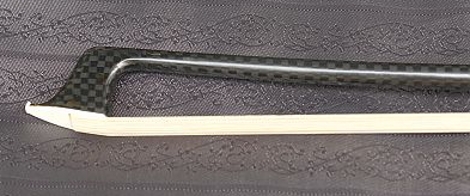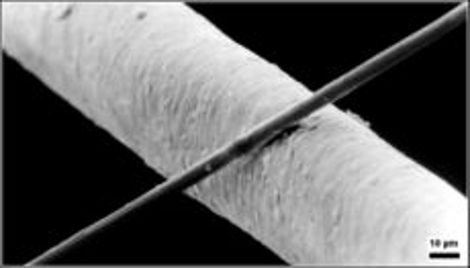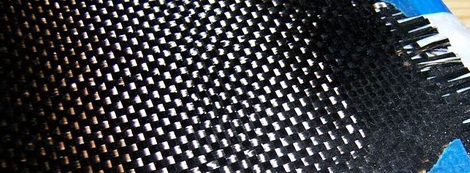CARBON - PROS AND CONSCurrently accepted since several years now, by carbon is actively entered to become a part of the musicians' lives. But the feeling has so far not been so idyllic, at least for the moment being. From my side, as a musician, but above all as technical, I decided to express my opinion.! Before expressing any opinion, more or less sharable about carbon bows , I think it would be advisable to know them a little better. Firstly, the bows are made of carbon fiber, carbon is only the main element of which they are composed. Carbon fiber is a threadlike structure, created in the late '50's in the U.S., and consists of carbon threads woven into a fabric that is very thin and strong, kept in shape by a resin matrix. In addition to high performances, the carbon fiber, as a composite material, has also the advantage of being extremely versatile, and that is why it was introduced into bowmaking . Carbon fiber is used because, compared to its density, it has a very high point of maximum yield very high, i.e. very high Young's specific modulus. Now, if you remember the article of Eng. Bianchi ('SOUND VELOCITY, RESONANCE AND BOWMAKING ), the sound speed can be expressed as, Young's modulus divided by density, all under square root, i.e. Young's specific modulus. Consequently : sound velocity = Young' specific modulus A carbon filament (black) and a hair While Pernambuco, in very rare cases, can get reach a sound speed a little bit over 6000 m / s, the carbon filament reaches 7500 m / s speed. Caution: I said the filament, and not the fabric. Pernambuco wood – visible medullar rays Fabric of carbon filaments As you can see in he two pictures above, there are similarities between Pernambuco and carbon fiber. Both materials are in effect fabric, but while this Pernambuco has a longitudinal sound velocity of 5700 m / s, and a transversal one over 2000 m / s, that added to the first one gives 7700 m / s, the carbon filaments , when intertwined, always give a total of 7500 m / s. That is to say , if the fabric of carbon fiber we created has a longitudinal size of 5700 m / s, it will have 1800 m / s. as transversal. These figures mean two things: 1) The great Pernambuco has better performances than carbon fiber 2) The carbon fiber has too high performances to be neglected Only 0.05% of the existing can match these standards. Furthermore, a carbon fiber bow, once you have found the right fabric, can be replicated into N copies, while the pernambuco stick is unique, and a great craftsman is needed in order to make it a playable one . The better the wood, more difficult to work on it ! In a nutshell, although the research is far from being finished, at high levels pernambuco wood cannot surely be overcome by carbon fiber. But on the other side, in my career I never found a wooden bow, whose cost was less than $ 1,000 with a material having better performances than carbon fiber. A bow made of carbon fiber surely doesn't emit a great sound, at least for now, but usually it owns a properly done curve, it is well balanced, and you can find some of them starting from 70 euros. They are with no doubt excellent for, student, the only advice to you is to replace hair, usually the standard one mounted on them are very poor. . See you soon Paolo
|
   |








